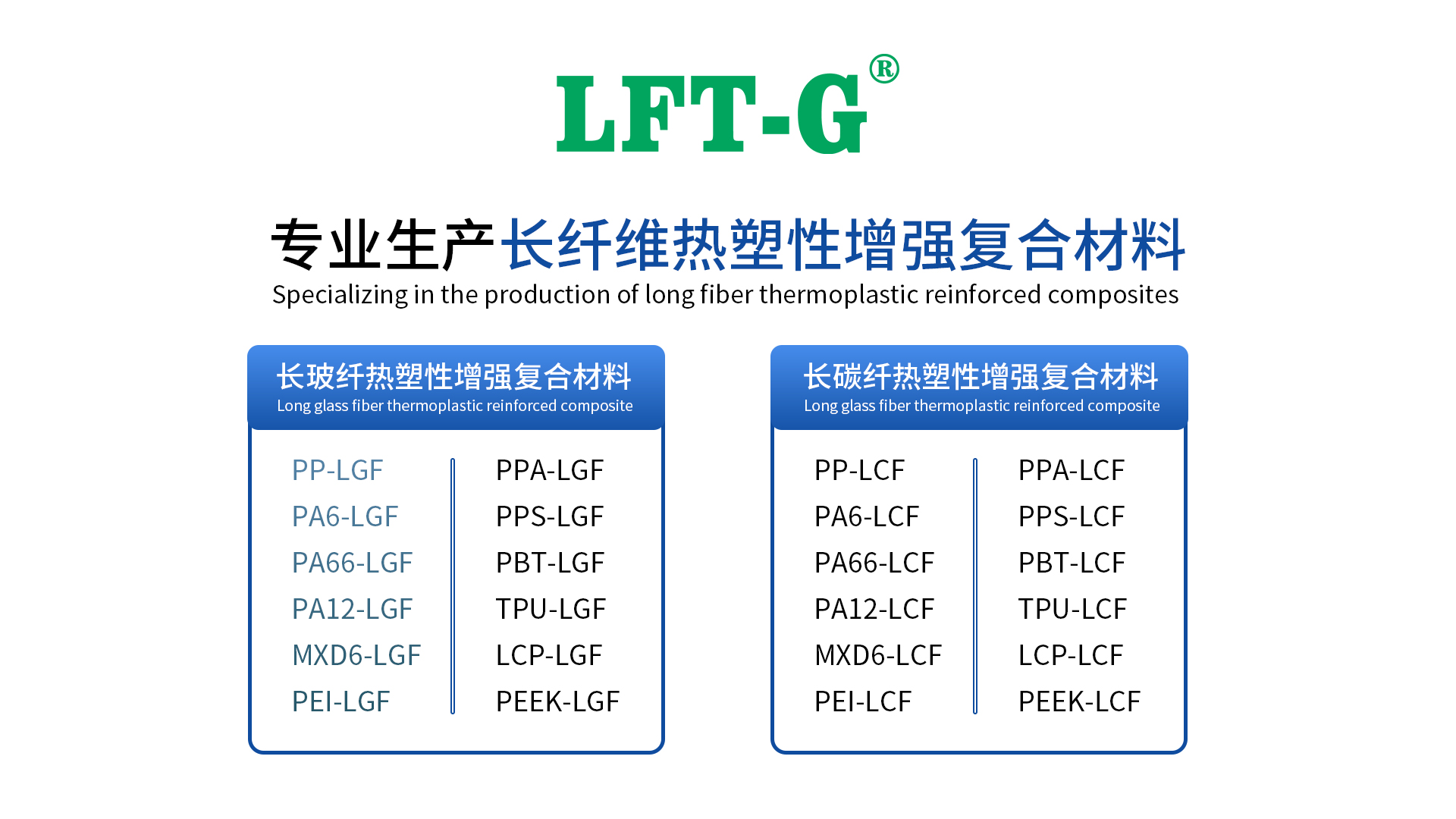item no.:
PPS-NA-LCF30Payment:
T/T or L/C (other payment ways also can be diproduct origin:
Xiamen, ChinaColor:
Original color (also can be customized)shipping port:
Xiamen, ChinaLead Time:
7-15 days after shipmentPPS material
In recent years, the application of special engineering plastics has gradually extended from the previous military and aerospace fields to more and more civil fields, such as automotive, equipment manufacturing, high-end consumer goods, etc.. Among them, polyphenylene sulfide (PPS) and polyether ether ketone (PEEK) are two special engineering plastics that have developed relatively quickly and have a wide range of applications.
PEEK is superior to PPS in terms of strength, toughness, and maximum operating temperature. In terms of high-temperature resistance, PEEK is about 50°C higher than PPS. But on the other hand, the relatively obvious cost advantages and better processing properties of PPS make it more widely used.
PPS is a crystalline, highly rigid white powder polymer, high heat resistance (long-term use of 200 ℃ -220 ℃, short-term can withstand high temperatures of 260 ℃), is a mechanical strength, rigidity, flame retardant, chemical resistance, electrical properties, dimensional stability are excellent resin.
It has excellent wear resistance, creep resistance, flame retardancy and self-extinguishing properties. It maintains good electrical properties at high temperature and high humidity. Good flowability, easy to mold, almost no shrinkage and concave spot when molding. Good affinity with various inorganic fillers. It has been developed to shorten the difference between standard thermoplastic materials (e.g. PA, POM, PET ......) and advanced engineering plastics.
PPS has the following distinct performance advantages:
(1) Intrinsically Flame Retardant
Unlike PC and PA, PPS pure resin and its glass fiber/mineral powder filled composites without any added flame retardants 可以轻松达到V-0@0.8mm甚至更薄厚度的V-0阻燃级别. Although PC and PA have a cheaper price and better mechanical strength (especially impact strength) than PPS, the cost of PC and PA composites with the addition of halogen-free flame retardant formulations (V-0@0.8mm级别) is significantly higher, in many cases even higher than PPS materials with the same mechanical strength.
(2) Ultra-high flowability
For the semi-crystalline PPS, its very high fluidity can allow glass fiber filling easily more than 50 %, while in the process of high-temperature melt blending extrusion, PPS compared to PC lower viscosity can make the glass fiber to withstand a lower degree of shear and extrusion, so that the final injection molded products have a longer retention length, to further enhance the effect of modulus.
(3) Ultra-low water absorption
This advantage is mainly for PA. In terms of fluidity, highly filled PA and PPS are comparable; and for mechanical properties, the same amount of filling PA composites will be more advantageous. But in addition to the halogen-free flame retardant limitations, another factor limiting the application of PA is its high water absorption: compared to high-temperature nylon PA6T 0.6%-1% water absorption, PPS 0.03% water absorption rate is almost negligible. The result is that PPS products due to water absorption and deformation of the product defect rate is much lower than the same conditions of PA products.
(4) the unique metallic texture and higher surface hardness
PPS injection molded parts will be dropped on the table, a very crisp sound unique to PPS crash. Through the special mold and reasonable mold temperature with the PPS injection molded parts in the human touch will also sound similar to the impact of metal, the surface will be as smooth as a mirror, with a metal-like luster.
PPS-LCF compounds
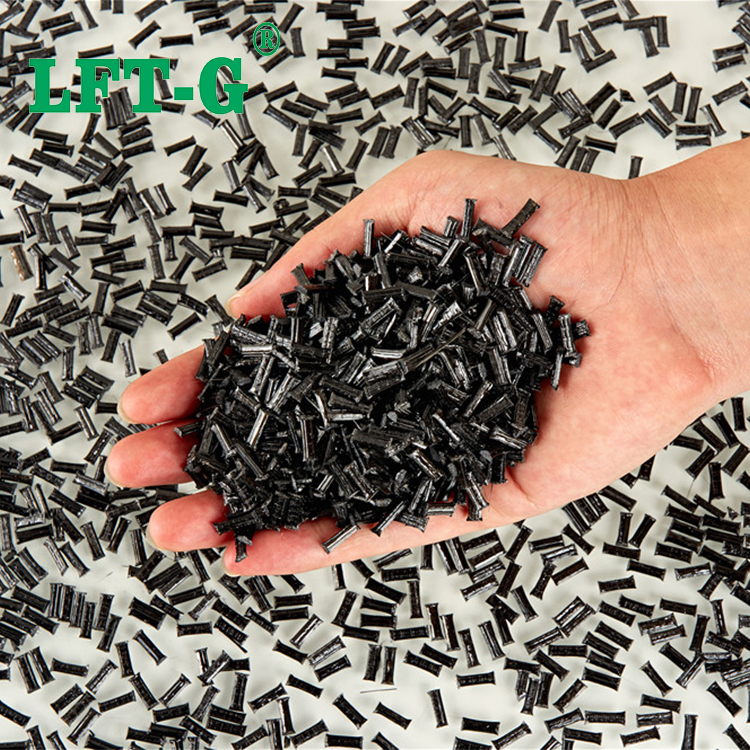
Length: About 12mm, or customized
Color: Original color, or customized
Fiber specification: 20%-60%
Grade: General grade
Long carbon fiber reinforced composites offer significant weight savings and provide optimum strength and stiffness properties in reinforced thermoplastics. The excellent mechanical properties of long carbon fiber reinforced composites make it an ideal replacement for metals. Combined with the design and manufacturing advantages of injection molded thermoplastics, long carbon fiber composites simplify the re-imagining of compoents and equipment with demanding performance requirements. Its widespread use in aerospace and other advanced industrials makes it a "high-tech" perception of consumers.
Datasheet for reference
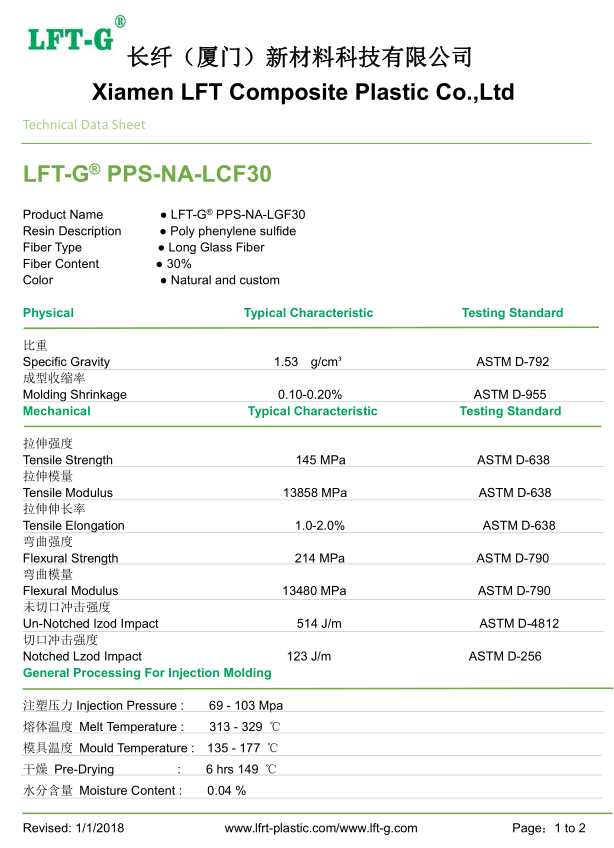
Application
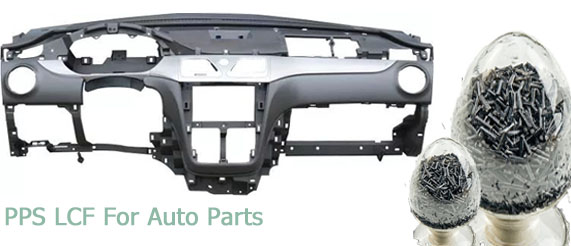
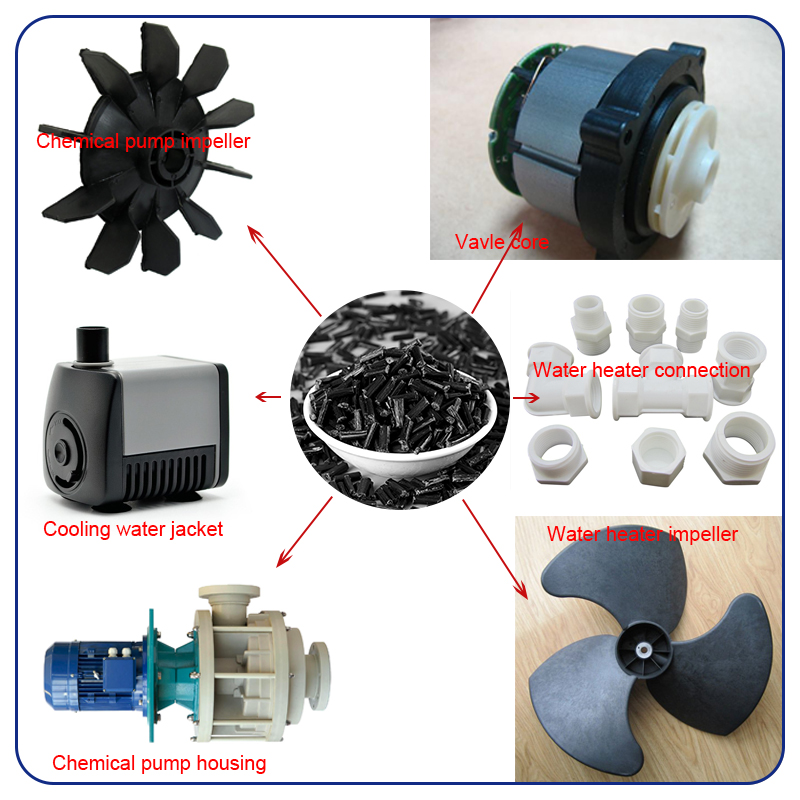
Factory
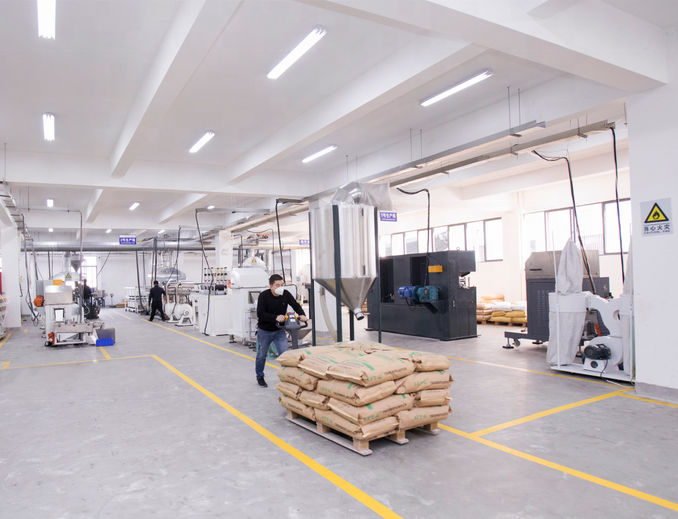
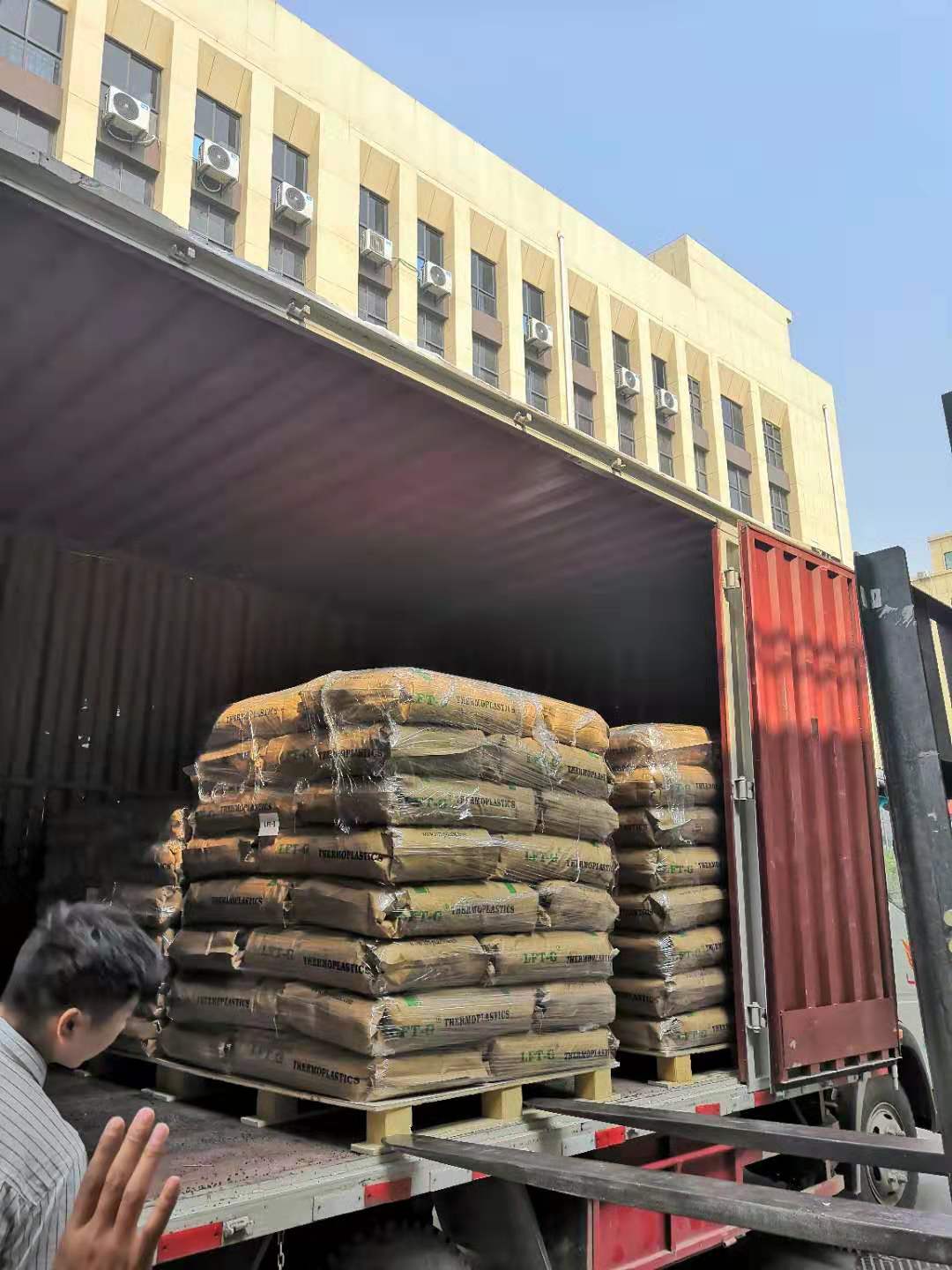
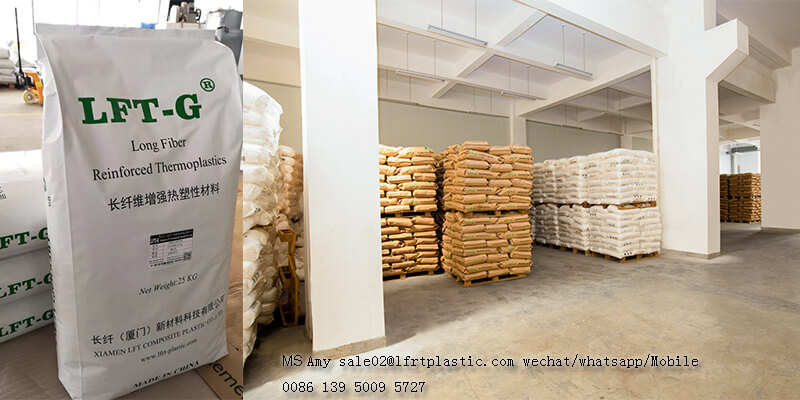
Q & A
1. Is there a uniform reference data for carbon fiber product performance?
The performance of specific carbon fiber filaments is fixed, such as Toray's carbon fiber filaments, T300, T300J, T400, T700, etc. There are a series of parameters that can be traced. However, there is no uniform standard to measure the carbon fiber composite products. Firstly, the different models of raw materials selected will lead to different performance of the products, and then the different selection of substrate and product design will lead to different performance of the products. In addition to some common carbon fiber tube, carbon fiber plate and other conventional parts, most of the carbon fiber products have to be sampled before production, through the test of the sample to determine whether the performance of the product is in line with the expected standard of use, and as a base point, so as to carry out mass production and use.
2. Are carbon fiber composite products very expensive?
The price of carbon fiber composite products is closely related to the price of raw materials, the level of technology and the quantity of products. The higher the performance of the raw material, the more expensive it is, such as the carbon fiber PEEK thermoplastic material used in orthopedics. Of course, the more complex the manufacturing process, the greater the working time and workload, and the increased production costs. However, the larger the order quantity, the lower the cost per product. In the long run, the superior performance of carbon fiber will prolong the life of the product, reduce the number of maintenance, and is also very beneficial to the reduction of the cost of use.
3. Are carbon fiber composite products toxic?
Carbon fiber composites are made of carbon fiber filaments mixed with ceramics, resins, metals and other substrates, and are generally not toxic. For example, the above-mentioned PEEK material is made of food-grade resin, which is very compatible with the human body and is not only harmless to the human body, but also becomes a more ideal material for orthopedic surgery because of its high strength and elastic modulus close to the bone cortex. Carbon fiber medical bed plate, which will be in contact with many patients' bodies every day, will not have adverse effects on the human body; on the contrary, it will be of great help to the accuracy of medical diagnosis.
4. What is the difference between thermoset carbon fiber composite and thermoplastic carbon fiber composite?
Thermoset carbon fiber composites are mainly based on the role of curing agent in the curing process. While thermoplastic carbon fiber composite products mainly rely on cooling down to achieve shaping. Thermoplastic carbon fiber composites are not as popular as thermoset carbon fiber composites, mainly because they are expensive and are generally used in high-end industries. Thermoset carbon fiber composites are difficult to recycle due to the limitation of the resin matrix itself, and are generally not considered; thermoplastic carbon fiber composites can be recycled, and can be made twice as long as they are heated to a certain temperature.
Certification
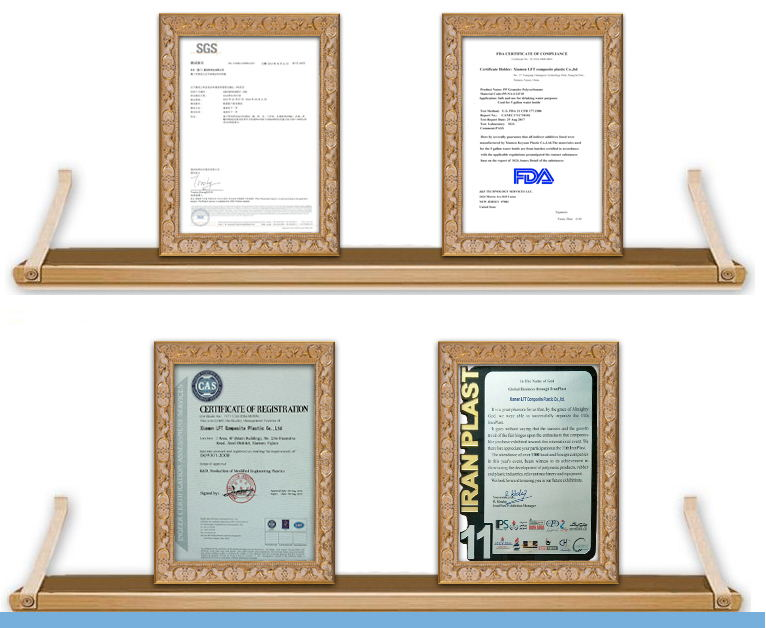
Main materials
